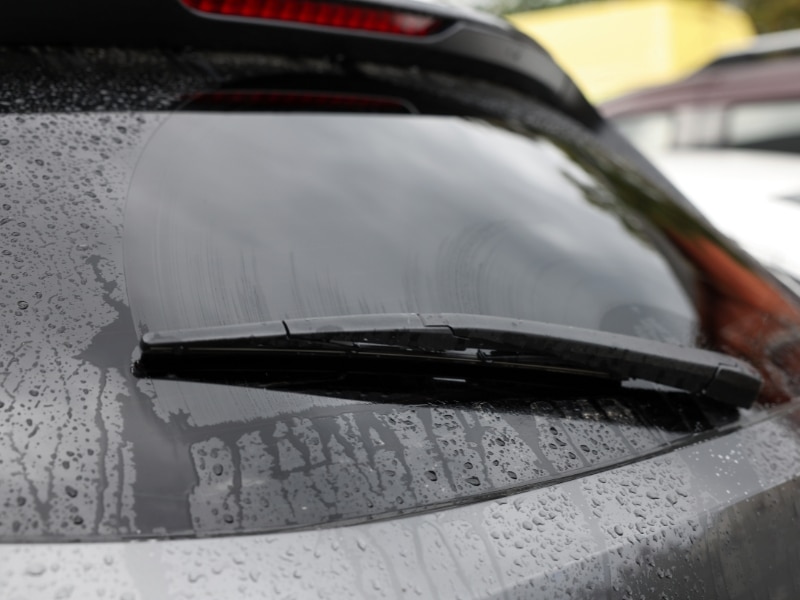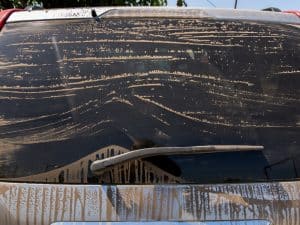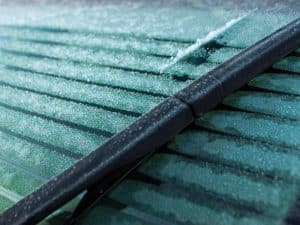Your vehicle’s rear windscreen is crucial to visibility, safety, and structural integrity. However, everyday habits and maintenance mistakes can shorten its rear windscreen lifespan, leading to unnecessary repairs or even full replacements. Understanding what causes premature damage helps you avoid costly fixes and keeps your rear window in top condition. This article will explore the most common mistakes that can damage your rear windscreen and how to prevent them.
What common habits damage your rear windscreen?
Many drivers unknowingly engage in everyday habits that weaken their rear windscreen over time. From slamming the boot shut to using improper tools for cleaning, these mistakes can gradually cause cracks, scratches, or even shattering.
Habits that harm your rear windscreen:
- Slamming the boot too hard – Puts excessive stress on the glass, leading to hairline fractures.
- Ignoring regular cleaning – Dirt, debris, and road grime can cause scratches and weaken the glass.
- Using rough or improper cleaning tools – Hard brushes or paper towels can scratch the surface.
- Leaning heavy objects against the rear windscreen – External pressure can stress the glass, leading to cracks.
- Driving with a cracked windscreen – Even a small chip can spread due to vibrations and pressure changes.
Simple daily habits can lead to long-term damage. Avoid unnecessary stress and handle your rear windscreen with care to extend its lifespan.
Can using harsh cleaners harm your rear windscreen?
Cleaning your rear windscreen is essential for visibility, but using the wrong products can do more harm than good. Many household or industrial cleaners contain chemicals that weaken the glass and damage embedded defrosting elements.
Harmful cleaning practices to avoid:
- Using ammonia-based cleaners – These can break down the adhesives holding the glass in place.
- Applying too much force while scrubbing – Excessive pressure can create micro-scratches.
- Using abrasive sponges or brushes – Rough materials damage the surface and reduce clarity.
- Ignoring proper drying methods – Excess moisture can cause streaking or affect seal integrity.
- Spraying directly on the heating elements – Liquid can seep into wiring, leading to malfunctions.
Stick to automotive-approved glass cleaners and use a microfibre cloth to maintain a spotless yet damage-free rear windscreen.
How can ignoring minor cracks lead to bigger issues?
A small crack might seem harmless at first, but even the tiniest damage can spread over time, compromising your rear windscreen’s strength. External stressors like road vibrations, temperature shifts, and weather conditions can accelerate the damage.
Why small cracks turn into major problems:
- Temperature fluctuations cause expansion and contraction – Weakens the glass further.
- Dirt and debris enter the crack – Making repairs less effective and worsening the damage.
- Structural integrity is compromised – A weak rear windscreen can shatter under impact.
- Increased risk of water leaks – Rain and moisture can seep into cracks, damaging the interior.
- Safety hazards in an accident – A damaged windscreen may not provide adequate protection.
Driving with a cracked windscreen can put you at risk, so address minor cracks immediately to prevent them from spreading and leading to expensive replacements.
Is temperature change putting stress on your rear windscreen?
Sudden temperature changes can put your rear windscreen under immense stress. Glass expands in heat and contracts in cold, which can cause cracking or shattering if the changes are too abrupt.
How temperature fluctuations affect rear windscreens:
Temperature change factor | Effect on Windscreen |
Direct sunlight exposure | This causes the glass to expand, weakening its structure |
Pouring hot water on an icy windscreen | This can lead to instant cracking due to rapid expansion |
Defrosting too quickly in winter | Uneven heating puts stress on the glass |
Parking under direct sun | Accelerates wear and tear on window seals |
Gradually adjust temperatures inside your vehicle and park in shaded areas to reduce temperature-related stress on your rear windscreen.
What are the signs that you need a rear windscreen replacement?
Knowing when to replace your rear windscreen is crucial for safety and vehicle integrity. If you ignore the warning signs, you could be driving with a compromised glass structure that may fail unexpectedly.
Signs you need a new rear windscreen:
- Large cracks or deep chips – Repairs may not be effective for extensive damage.
- Glass distortion – Warped glass reduces visibility, making driving unsafe.
- Water leakage around the edges – Suggests a failing seal that can lead to further damage.
- Defrosting elements not working – If your rear defroster stops working, it may indicate deeper issues.
- Glass rattling or loose fitting – Sign of improper installation or deterioration.
f you notice any of these signs, seek professional assistance to prevent further complications.
How does failing to defrost correctly cause damage?
Your rear windscreen defroster is essential for maintaining visibility, but incorrect usage can lead to stress cracks or electrical damage.
Common defrosting mistakes:
- Turning the defroster to full blast immediately – Sudden temperature shifts weaken the glass.
- Using a scraper with excessive force – Scraping too hard can cause scratches or chips.
- Pouring hot water to speed up defrosting – Extreme temperature changes lead to cracks.
- Blocking defroster vents with objects – Reduces efficiency and causes uneven heating.
- Ignoring electrical issues – Malfunctioning defrosters can lead to damage over time.
Always defrost gradually and use the proper deicing method to protect your rear windscreen.
Does improper installation affect rear windscreen longevity?
A poorly installed rear windscreen can cause long-term problems, including leaks, rattling, and even sudden breakage.
How incorrect installation causes problems:
Installation Issue | Effect on Windscreen |
Misaligned placement | Causes pressure points that lead to cracks |
Poor adhesive application | Results in leaks and weak structural integrity |
Using non-OEM glass | May not fit properly, increasing stress |
Rushed installation | Leads to an improper seal, reducing lifespan |
Always ensure that a qualified professional rear windscreen repair service installs your rear windscreen to prevent premature damage.
How can you extend the lifespan of your rear windscreen?
Maintaining your rear windscreen doesn’t have to be complicated. With a few simple habits, you can significantly increase its durability.
Tips to keep your rear windscreen in top condition:
- Close your boot gently – Avoid unnecessary impact on the glass.
- Use proper cleaning methods – Stick to auto-safe cleaners and microfibre cloths.
- Address cracks early – Get minor damage repaired before it worsens.
- Park in the shade – Minimise temperature stress and UV exposure.
- Use defrosters correctly – Gradually warm the glass to prevent cracking.
- Ensure professional installation – A properly fitted rear windscreen lasts longer.
Preventative care and mindful usage go a long way in extending the lifespan of your rear windscreen.
Conclusion
Your rear windscreen plays a vital role in your vehicle’s safety and functionality. By avoiding common mistakes like using harsh cleaners, ignoring minor cracks, or exposing it to extreme temperatures, you can extend its lifespan and prevent costly replacements. Regular maintenance and professional inspections are key to keeping it in perfect condition.
For reliable windscreen repairs and replacements, GRS Windscreen PRO has you covered.



